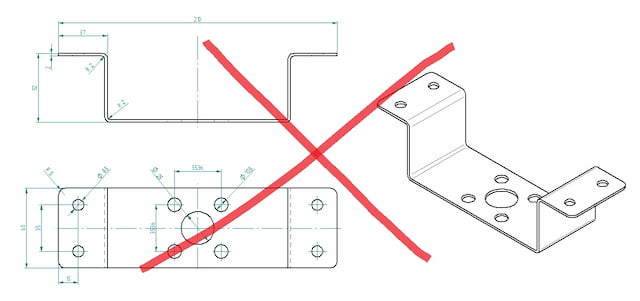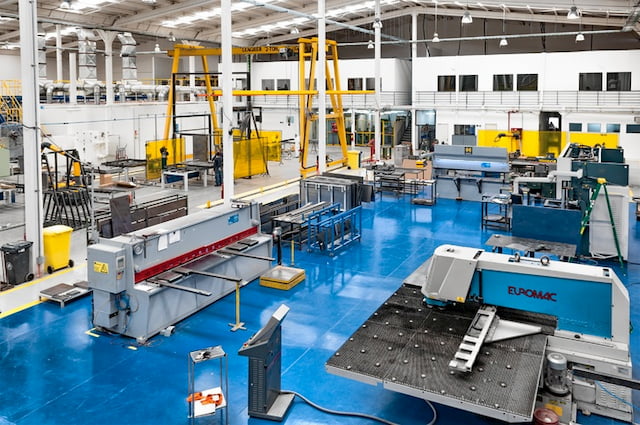What if I told you that you can save at least £10,000 per engineer annually? We’ll show you the maths behind it in this article.
Manufacturing cost reduction is usually aimed at saving money through cheaper production. That’s the most obvious way – comparing different offers and choosing the lowest price.
The variety of possibilities is much wider. Well-known ideas for cost reduction in manufacturing are:
- Assessing your current costs
- Making assessment-based corrections
- Communication with workers to find more areas of optimisation
- Re-evaluating previous decisions
- Following ISO 9001 standards for continuous improvement
- Reducing energy consumption
- Automating processes that don’t need human interaction
- Minimise transport costs
- Reduce the time wasted on non-value work activities
We are taking a closer look at the last point. It is often overlooked because many of those activities are viewed as a part of the natural manufacturing process. But we have some new viewpoints to share with you!
Saving Design Engineers’ Time
So let’s get to my audacious claim first. £10,000 is a lot of money. What can you do to save this amount annually per engineer?
An engineer’s weekly workflow includes many steps. To simplify, an average project may take a week to accomplish from idea generation to making drawings. The last part – producing manufacturing drawings – takes about 20% of the allocated time. And this estimation includes a buffer.
Now, what would happen if you just didn’t have to make those drawings? You’d save 8 hours per week, which totals about 400 hours per year. In monetary terms, this equals the aforementioned £10,000 per year. And how to omit this crucial part of the engineering practice?

Fractory’s cloud manufacturing platform accepts STEP files as well as file types native to SolidWorks (SLDPRT) and Autodesk Inventor (IPT). Nowadays, all projects are first done as 3D models that can easily be converted into the universal STEP format. Uploading those to our platform gives an instant price quote. Therefore, there’s no more need for drawings.
And there’s no more need to spend 20% of an engineer’s time on that. How many engineers do you have at your company?
Comparing Different Designs
Good engineers follow these engineering tips to never rely on one solution only. Picking the best one comes down to functionality, reliability, aesthetics and price. The price point, so far, has been a rough estimation based on the engineer’s experience.
With automated quoting it’s easy to perform quick design to cost analysis, you can simply upload a few competing ideas and compare the prices. You’d be surprised by the results. A gut feeling often doesn’t come close to reality.
Discovering that a higher-value solution has a similar or even lower price compared to a lesser option demonstrates the effectiveness of integrating cost and value engineering principles. A simple example is a part optimised for weight, where numerous cutouts make it seemingly much costlier. It can often be so that those cutouts, in reality, add very little to the final price.
Cost Reduction Through Purchasing Manager
Saving Time on Quoting
Every company that outsources its production has a procurement manager who takes care of the ordering process. They probably get 3-4 quotes from different suppliers before settling on one offer. This entails back-and-forth emails and calls. Let’s say getting each quote takes around an hour. That’s 4 hours in total, or £100 spent towards communication in wages.
If you know your suppliers, they probably give you quotes in a 15% range. With orders up to £1,000, this amounts to a maximum of £150 in savings. But getting those quotes cost you another £100.
This means that the cheapest option is £850 + £100 (time spent on getting offers) = £950. Fractory’s algorithms give you a competitive quote by only including suppliers that are able to provide reasonable prices for a particular job. Sometimes we’re at the lower end of the spectrum, sometimes at the higher. On average, you would get a price of £925, which still amounts to monetary profit + available time for value-adding activities.
- Personal account manager
- Quality assurance
- Payment terms for companies
- On-time delivery by Fractory
Switching Tasks
Time loss occurring from switching tasks is difficult to measure. But there’s clear evidence that multitasking and switching tasks has a largely detrimental effect to productivity.
Therefore, having one supplier give you quotes vs getting many different has another perk to it. Keeping a “clean desk” helps with focus, resulting in better judgement ability and productivity.
Where Can I Manufacture This?
Although we started with getting quotes, the first step is actually making sure to find suppliers who can do the job for you. With simple 2 mm carbon steel cutting, you probably know where to turn to. But what if you need 20 mm aluminium cutting?
Our platform lets you choose between all the available materials. Every selection has at least a dozen suppliers ready to do the job. This amount of providers helps to ensure that we can offer a competitive price. And you don’t have to find anyone new each time your engineers have used a less common material.
Cutting Costs Through No Post-Processing
Are you usually paying extra for removing burr? Or do you just get a pile of sheets that need post-processing? Not with us. Your workers can now save time.
Fractory’s network of pre-vetted partners only deliver parts that come with a quality guarantee. Every cut metal part is burr-free. Sometimes it comes down to the bench operator’s expertise, other times deburring is simply necessary (e.g. thick aluminium parts).
The Cost of Hiring New Talent
There’s a clear shortage of new talent on the market. In all honesty, mechanical engineering is not the most popular choice among engineering career paths.
So we can turn back to means of saving time. Using your workforce reasonably and reducing the amount of wasted time should be a priority.
If you have 5 engineers, each of whom saves 20% of their daily time, 4 engineers can do the same amount of work. The extra time can be allocated towards actual engineering and designing. In essence, you have an extra employee available to focus on providing value, not drawings.
Hopefully, we managed to bring out some valuable ideas for any engineering company. If you have some advice we should include here, let us know!



